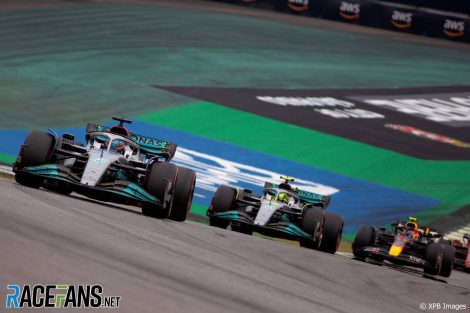Mercedes referred to its internal metrics which predicted which circuits would be best and worst for its problematic W13 as the “table of doom”.
The team began the 2022 Formula 1 season well off the pace of eventual champions Red Bull and their early rivals Ferrari. Although the team gradually made progress with the W13, even by the end of the season it found the car worked considerably better at some tracks than others.
This was highlighted over the final two rounds. Mercedes won at Interlagos but one week later at Yas Marina were only the third-quickest team.
Mercedes team principal Toto Wolff revealed on Saturday the team’s “table of doom” had foreseen that swing in performance.
“We always knew that we need to be prudent and not set our expectations based on the Brazil result,” he told media including RaceFans. “I think that circuit perfectly suited our car and everything ran very, very smoothly. And Abu Dhabi in our ‘table of doom’ was one of the worst tracks.”
The team’s chief strategist James Vowles explained the thinking which went into the “table of doom.”
“This is something that we have constructed internally that allows us to somewhat predict where our car will be relative to certainly the fastest cars track on track and it worked fairly well,” he said in a video published by the team. “It’s something that actually had fairly good correlation across the season and it did say that in, for example, Mexico and Brazil we would be significantly more competitive than we were going to be in Abu Dhabi.
Advert | Become a RaceFans supporter and
“It’s a function of the properties that make our car both strong and weak and that transpired to be true.”
This meant there was an upside to the car’s varying performance at the end of the season, said Vowles. “As perhaps negative as it comes across, that’s a very good thing, because it means that the properties of our car that we understand we actually have a good grasp on them sufficiently so they actually look to be real in real life and then the reasons behind it look to be correlated.”
Mercedes believe they understand why both Red Bull and Ferrari were stronger than them in Abu Dhabi.
“Part of it is that I think Ferrari moved backwards across Mexico and Brazil. It’s hard to explain why, but they definitely weren’t as competitive there as they were towards the end of the season in Abu Dhabi. They were a fierce…
Click Here to Read the Full Original Article at RaceFans…

